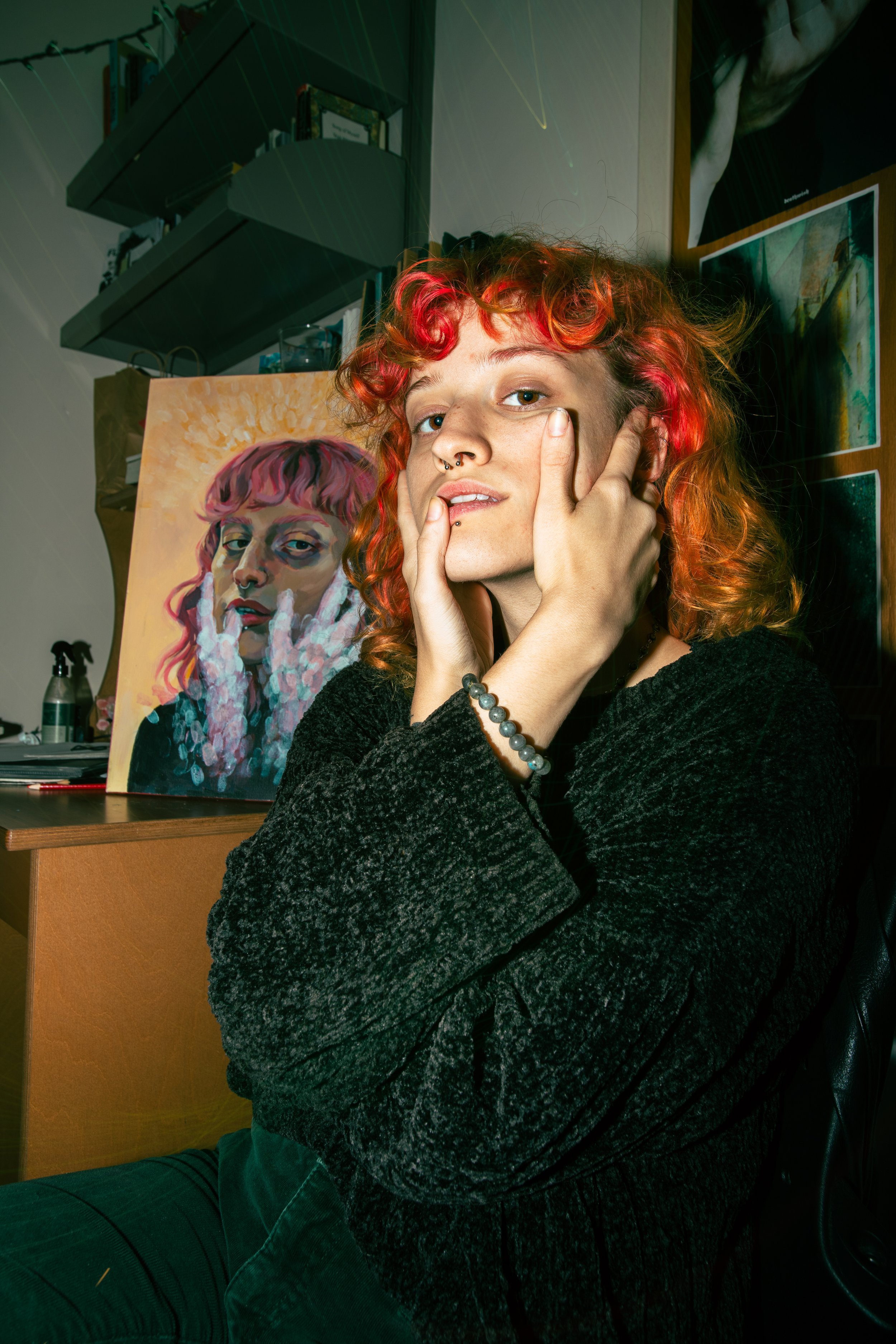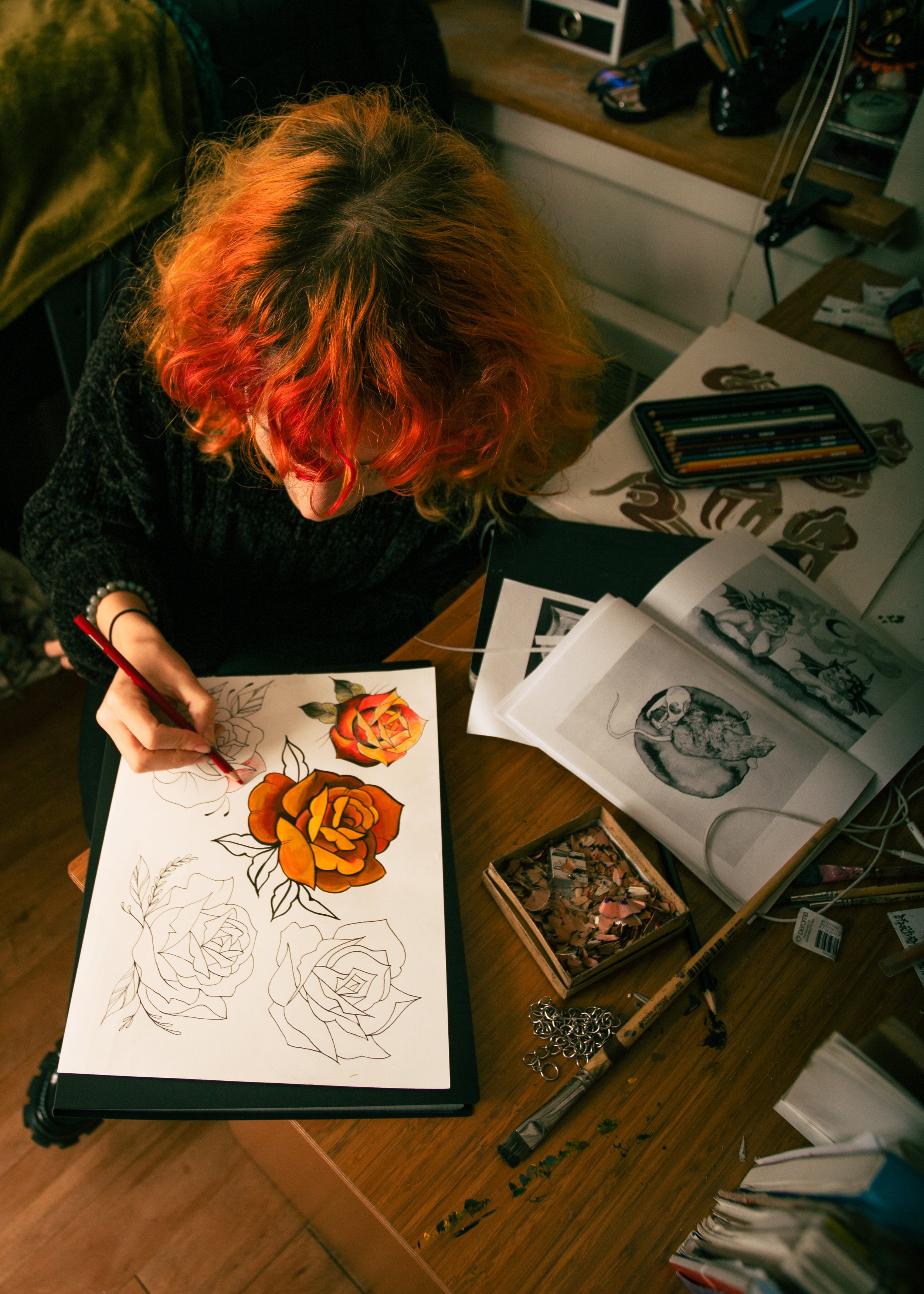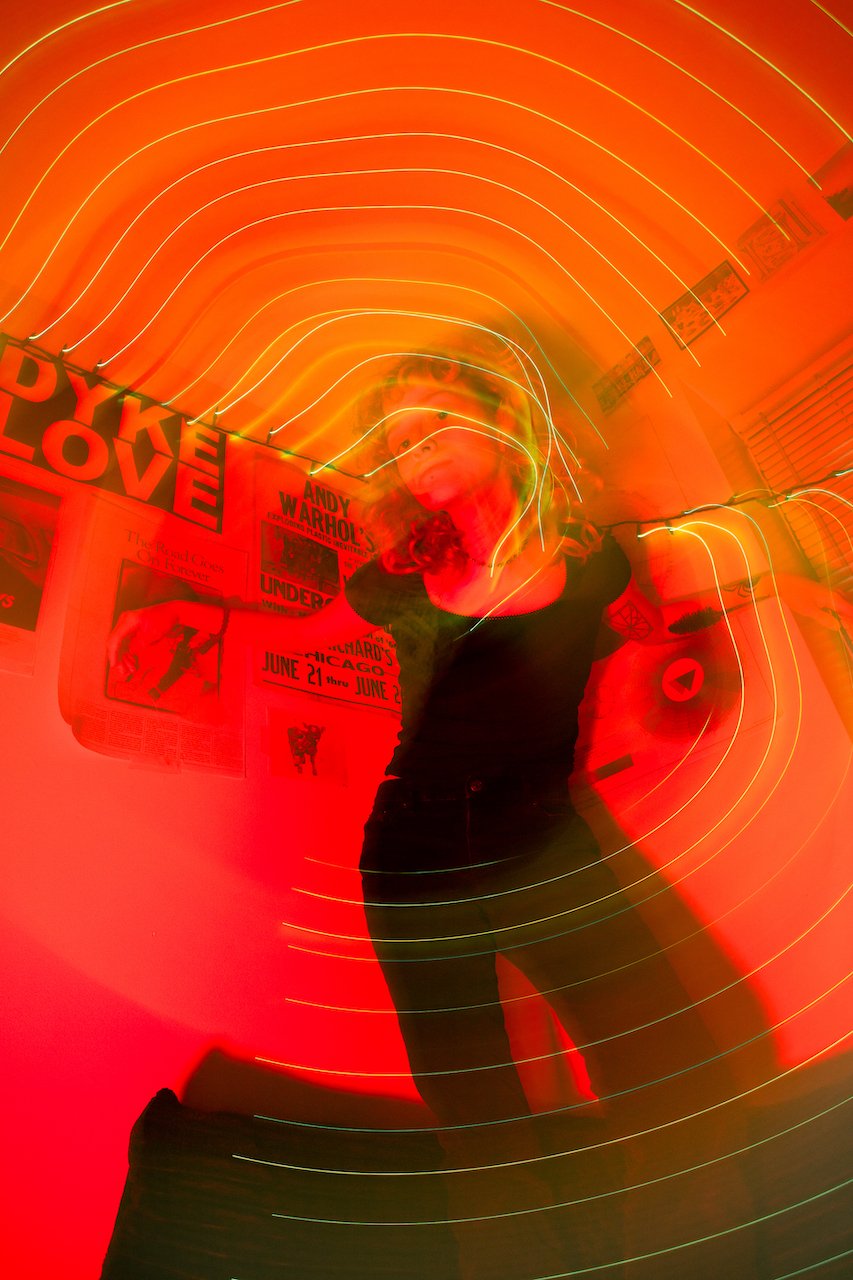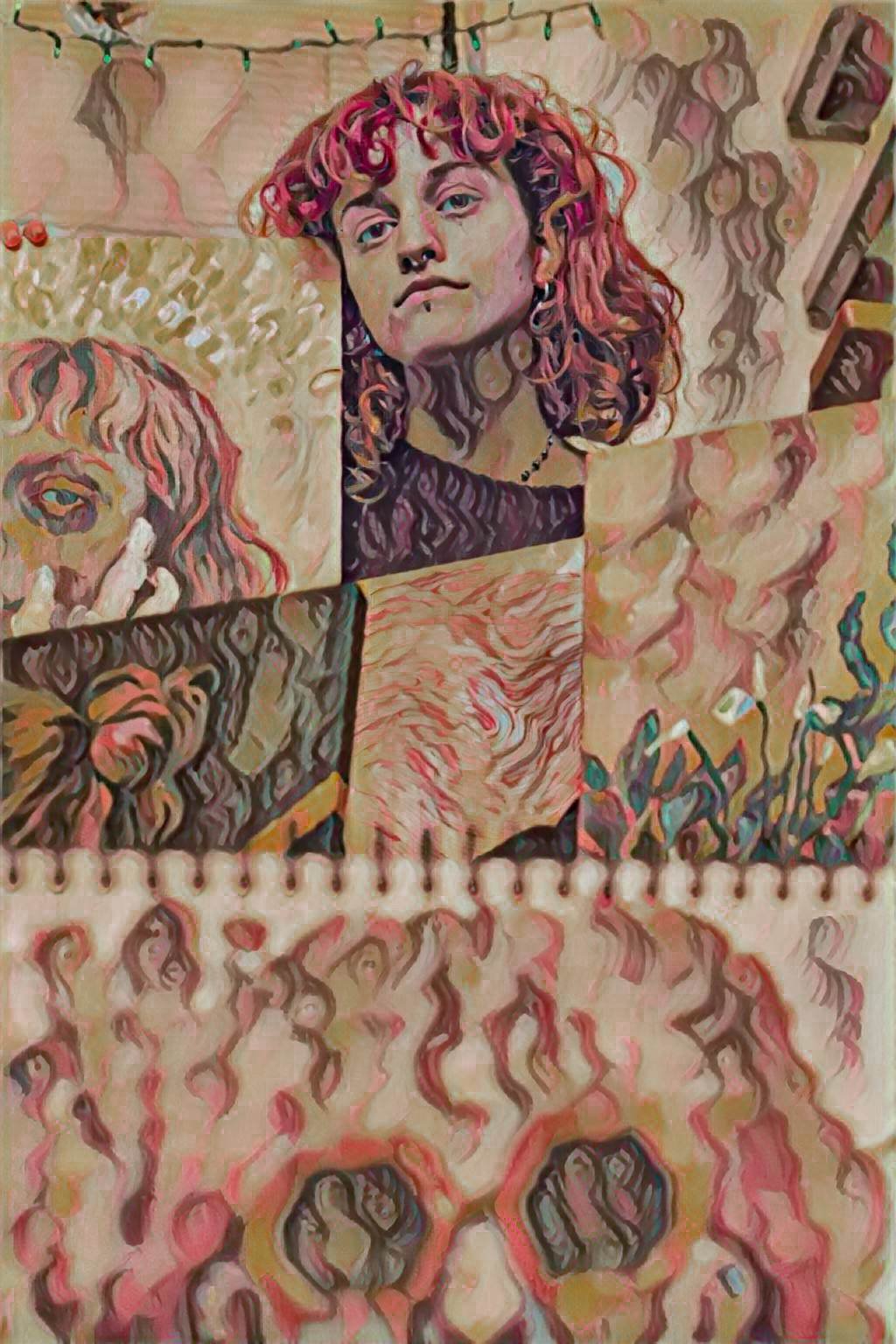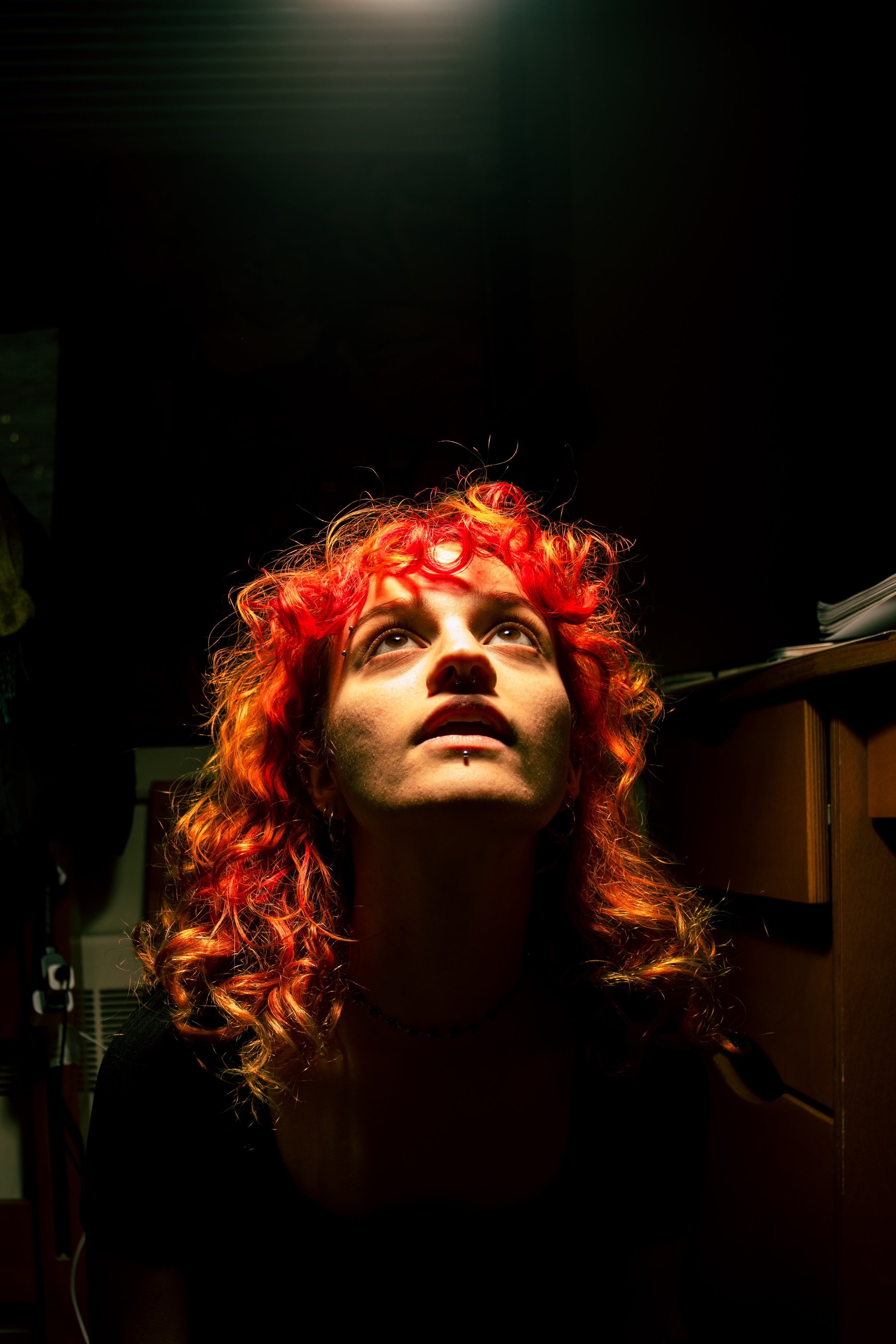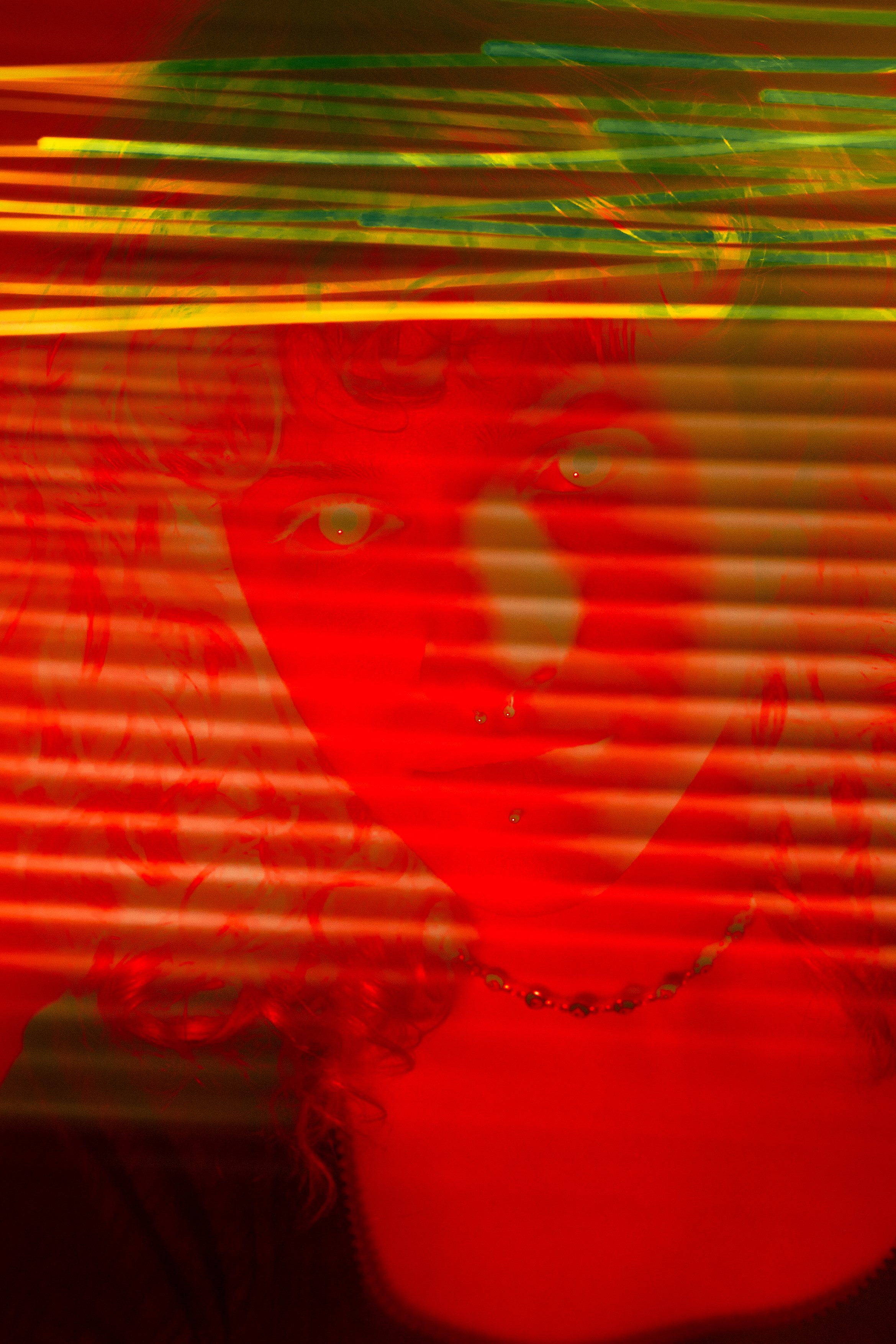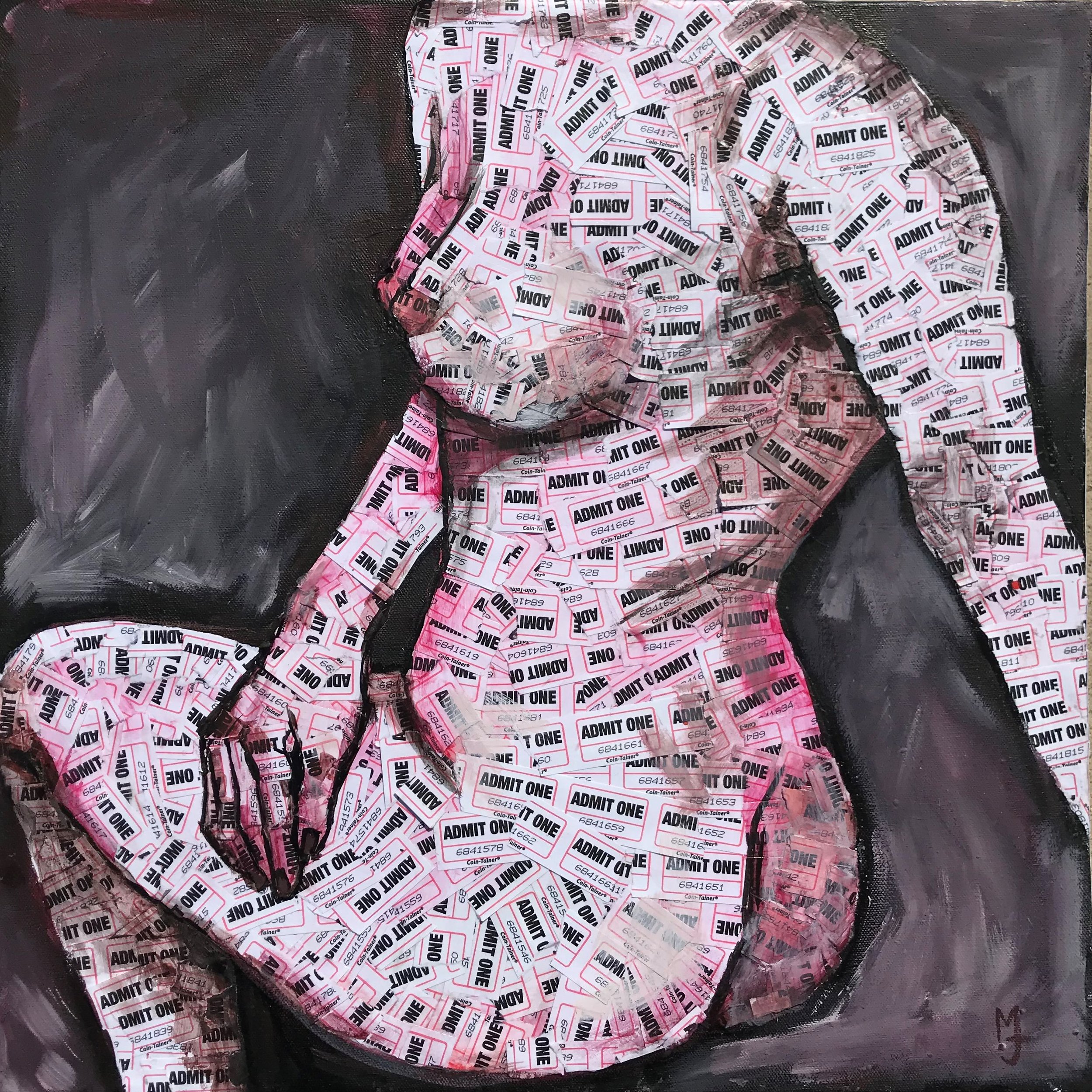Feature by Leni Sperry-Fromm
Photos by Rommel Nunez
When I met with Mac, I saw a face I had seen represented over and over in her work. With so many figurations of her already swirling in my head, I was excited to finally get to know the real person. Through talking to her, I learned that maybe, Mac is best represented through as many different iterations as you can find. It seems that, for Mac, her art is an attempt at collecting all these different pieces of who she is and who others know her to be, and putting that out there for interaction and interpretation.
At the beginning of 2021, Mac started a self-portrait project, producing one self-portrait every month. Many were stunning acrylic paintings, one is a paper-mache mask, and another a photo of that mask being smushed by a car. While the project began as an attempt to pin down her artistic style, the process morphed into an exploration of Mac’s perspective, self, and much more. “When I was looking at the self portraits I realized that they served as a diary. While I was making it, I kept asking ‘Who am I as an artist? What’s happening in my life? How do I show that?’”
January, 2021
As Mac tries to understand her own work, she’s attempting to get past the need to be understood by everyone else around her. There’s a catharsis in putting her work out into the world and welcoming people into that, without prioritizing the need for them to understand her. It makes Mac’s work feel incredibly intimate, almost jarring, as the viewer confronts the closeness that she invites people to share in her and her image.
“As I try to let go of caring about being understood, I have this extreme response of wanting to be completely translucent and vulnerable. To do that feels cool because I can make art about me where I'm not talking about things that I don't know about, but I'm also not being egotistical. I’m just peeling off layers of skin.”
July, 2021
March, 2021
And her work is just that, vulnerable and unashamed, challenging her audience to be a part of her world.
Rachel’s Apartment, 2021
The interaction between Mac and her audience is what adds significance to that process of transparency. “Other people looking at my work is what makes it feel so intimate. I feel like through my art I'm putting myself out there and saying, ‘Look at me. Touch me. Interact with me. Think about me.’” Mac’s work, though infinitely introspective, belongs in a space of relation between artist and viewer. Even painting is an interaction between Mac and herself, a place where a touch can make her more real, part of a network of people. “The project feels kind of like reverse psychology where I’m trying to be less self-centered through doing all this self portraiture.”
Mac has also been exploring ways to accomplish this through other mediums, most recently through her project ‘Privacy: A Provocation.’ For the project, Mac scanned the first page of journal entries, which turned the script into loose gibberish that she then presented to her teachers and friends. The scanning process created “a dada effect of being nonsensical, but then at the same time it was so confessional.” The project comments on the difficulties of communication, presenting a work that’s paradoxically transparent and unintelligible.
February, 2021
April, 2021
Other breaks from her self-portrait project include a painting, Saint Carlos. In it, her friend Carlos sits with a halo on his head, among angels and plants. The painting means a great deal to Mac, as she says it’s “my little hope that I’ll be a humanist.” The Renaissance styles she incorporated also made Mac think about the relationship between art and religion: “If I'm bold, making art is like your own form of religion. And that painting was like one of my little art angels.”
Saint Carlos, 2020
Aesthetically, Saint Carlos fits in with much of Mac’s other vibrant portraits. She says when it comes to portraiture, she focuses on skin the most: “It’s the most fascinating combination of colors and textures. I’m interested in exploring skin’s texture because this idea of touching and closeness is so real. Touch is the only real connection that I can’t overthink.” From the beginning, art has been rooted in a tactile, active process for Mac: “As I made art, it became more of a thing I did than a thing I made. It was an activity, more than a result.”
Ticket to Touch
Peanut Butter Jar, 2018
In this way, Mac’s process is messy and often accidental as she keeps asking herself questions. This process was integral to the creation of Mac’s recent performance art piece, where Mac made three papier-mâché masks of her face, stripping them off one by one to the tune of The House is Haunted by Russ Columbo. The result was a spooky, sexy commentary on femininity and Halloween. Mac, as someone “socialized with femininity,” relays that experience of Halloween changing from something fun and the ability to be whoever you want to changing into something sexualized as an adult: “I’m interested in that intersection of pretending to be someone else, having it be spooky and then making that sexy. Metaphorically that sticks with you as you grow up. So with the piece it was fun to have this idea of taking myself off and exposing that. And then I had to keep in mind the question of: how do I perform it? And I ended up performing femininity and my sexuality.”
Image generated with a convolutional neural network using Mac’s art style by Jay Trevino
The work is a testament to Mac’s creative process, while it might start as just beginning questions and small ideas, when she makes the work she finds a clear, direct statement. Mac celebrates the messiness of this approach: “I don't have it figured out. I don't have a lot of intention, but I do think I'm at a turning point. I do see what I'm making and what I'm experiencing, and I do like it. I don't want to take my art too seriously, but it is so connected to my feelings so there's a level of, not seriousness, but sincerity there. That's important to me. I just hope sincerity can exist alongside being a little bit stupid and figuring myself out.”
You can find Mac’s art on her instagram: @macjackart and on her website: https://macjacksonartist.wixsite.com/website. Mac will (probably) be open for commissions in her instagram DMs or her email macjacksonartist@gmail.com. Mac also welcomes people to send anonymous scans of their journal entries to her email in participation with the Privacy Project.































